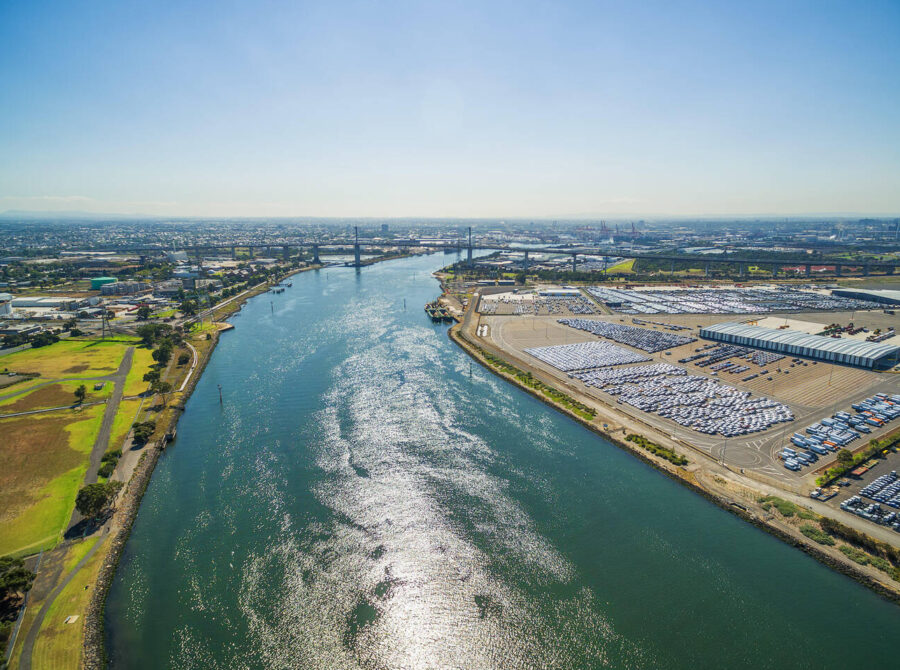From ‘noxious trades’ to car manufacture: the history of Melbourne’s Fishermans Bend

Since the mid-19th century, this site – just a stone’s throw from Melbourne’s CBD – has been strategically important for shipping, defence and industry. It initially supported “noxious trade” industries, including bone mills, slaughterhouses and glue factories. Their dross seeped into the Yarra and polluted surrounding swampland.
In the early 20th century, heavy industries – steel manufacturing, engineering works and aircraft production – set up shop at Fishermans Bend. General Motors-Holden’s Limited (GM-H) bought a parcel of land there in 1936 for £400,000. Construction of the head office, assembly plant, parts department, and other facilities was completed in 11 months. Despite its origins as a saddlery in 1856, Holden established itself in the fledgling automobile industry by manufacturing vehicle bodies in the early 20th century. At this time, car bodies and chassis – the base frame of the vehicle – were manufactured separately, because the latter was typically imported from overseas. By 1924 Holden was the exclusive supplier of car bodies for US car manufacturer General Motors (GM) in Australia. In 1931 Holden became a subsidiary of GM, merging to become General Motors-Holden’s Limited.

When the GM-H Fishermans Bend factory opened in 1936 it boasted state-of-the-art technology, modern facilities and Art Deco architecture. “In fact, nowhere else in the world will there be any [GM] plant containing all of the modern units and processes which will be operating at Fisherman’s Bend,” reported The Mercury on 11 January 1936. “A place of particular interest will be the special air-conditioned paint processes department, which has been designed to ensure the best possible working conditions, and the total absence of dust, which is so essential to constant high quality in paint finish.”]
The first vehicle manufactured at the plant was the American Oldsmobile, which rolled off the assembly line in 1936. Up to 100 cars were produced a day. Here, Australia’s first locally made, mass-produced car would one day roll off the assembly line – the Holden 48-215 “FX”. Affectionately dubbed “Australia’s own car”, it was destined to transform suburban Australia and become a cherished national icon.
When war broke out in 1939, GM-H became a leading munitions manufacturer. The plant produced armaments such as shell and bomb cases, major airframe assemblies, engines, guns, small marine vessels, and motor vehicle bodies. Women were hired to work the factory floor and, in 1942, employee Joyce Breedin was photographed assembling fighter planes. The former laundress was described as “an expert in setting brads ready for applying the ‘skin’ (body) to the wing frame of a Wackett trainer”.

In the economic boom of the postwar period, GM-H turned its attention to producing the first car wholly manufactured in Australia. The first FX Holden rolled off the assembly line on 29 November 1948 to much press and fanfare, with Prime Minister Ben Chifley exclaiming, “She’s a beauty!”
Labour unions had a strong presence at Fishermans Bend, so employees had access to a range of facilities. They included canteens, common rooms, a medical centre and even a theatrette. Alongside sporting contests and social events, in 1948 GM-H threw a lavish ball to celebrate the launch of “Australia’s own car” for the workers.

By 1958 Holden vehicles represented more than 40 per cent of Australia’s car sales. With a million vehicles sold by 1962, GM-H continued expanding and dominated the Australian market throughout the 1960s–70s. But by the 1980s–90s Holden sales started to drop because of increased competition with Ford and Japanese manufacturers such as Toyota. Due to a small domestic market, high manufacturing costs, and the fragmented right-hand-drive market, GM-H began scaling down operations across Australia in 2013.
In 2016 the Victorian government purchased the GM-H Fishermans Bend plant for $130 million. The University of Melbourne acquired part of the site in 2021 for a new engineering campus.

